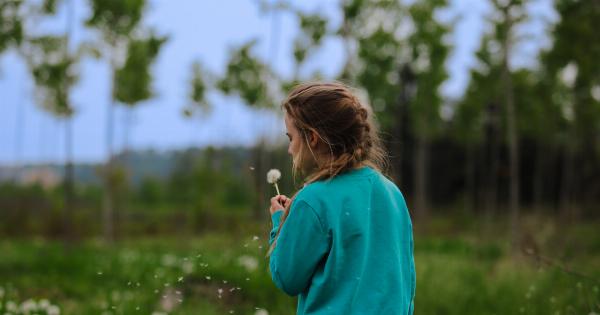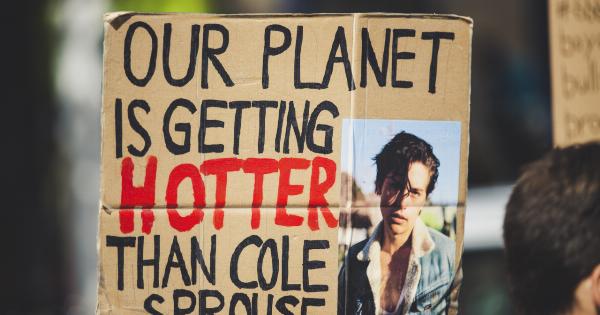Climate change is a global crisis that is already having significant and far-reaching impacts on our planet. From rising temperatures to extreme weather events, the effects of climate change are being felt across the world.
And while everyone is vulnerable to these changes, some groups, such as children, are particularly at risk.
The Vulnerability of Children
Children are among the most vulnerable populations when it comes to the effects of climate change. They are more susceptible to the health risks associated with increased temperatures and changing weather patterns.
Additionally, children often lack the resources and agency to cope with or adapt to these changes, making them more vulnerable to the impacts.
1. Children in Developing Countries
Children living in developing countries are especially at risk due to climate change. Many of these countries are already grappling with limited resources, poverty, and weak infrastructure.
Climate change exacerbates these challenges by increasing the frequency and intensity of natural disasters, such as hurricanes, floods, and droughts.
These extreme weather events can lead to displacement, destruction of homes and communities, and the loss of livelihoods.
Children in these areas often lack access to clean water, sanitation, and healthcare services, which can further increase their vulnerability to climate-related health risks, including malnutrition, waterborne diseases, and respiratory illnesses.
2. Low-Income Communities
Children from low-income communities in both developed and developing countries are disproportionately affected by climate change.
These communities often reside in areas with limited infrastructure and resources, making them more susceptible to the impacts of extreme weather events.
For instance, low-income neighborhoods in cities are more likely to experience flooding and inadequate drainage systems during heavy rainfall.
This not only disrupts access to education and healthcare services but also increases the risk of waterborne diseases and other health issues. Furthermore, these communities may lack the financial means to adapt to or recover from climate-induced shocks and stresses.
3. Indigenous Children
Indigenous communities, especially those living in remote areas, are particularly vulnerable to the effects of climate change. These communities often depend on their local ecosystems for food, water, and cultural practices.
However, climate change is altering these ecosystems, leading to food and water scarcity, loss of cultural heritage, and displacement.
Indigenous children are at risk of losing their traditional knowledge and practices, which are closely tied to the natural environment.
This loss of cultural identity can have significant long-term consequences on their well-being, development, and mental health.
4. Coastal Communities
Children living in coastal communities are also highly vulnerable to climate change impacts. As sea levels rise, these communities face increased risks of flooding, erosion, and storm surges.
Many coastal regions are home to a large number of low-income communities and small island nations where limited resources and infrastructure make adapting to these changes even more challenging.
Coastal communities often rely on fishing and agriculture for their livelihoods, but these sectors are threatened by warming oceans, coral bleaching, and changing weather patterns.
The loss of these livelihoods further perpetuates poverty and food insecurity, affecting the health and well-being of children in these areas.
5. Refugee and Displaced Children
Climate change is increasingly becoming a driver of displacement and migration, with millions of people forced to leave their homes due to climate-related disasters and environmental degradation.
Among these displaced populations, children are particularly vulnerable.
Refugee and displaced children often face immense challenges in accessing basic needs such as food, water, shelter, and education. They are also at a higher risk of exposure to violence, exploitation, and trafficking.
The psychological impact of being uprooted from their communities and support networks can have long-lasting consequences on their well-being and development.
Efforts to Address the Vulnerability
Recognizing the unique vulnerabilities of children, there is a growing effort to address their specific needs in climate change adaptation and mitigation strategies.
1. Child-Centered Climate Policies
Policymakers and governments are increasingly focusing on incorporating child-centered perspectives in climate policies and planning.
This involves recognizing the specific challenges faced by children and ensuring their rights and well-being are safeguarded in climate adaptation and mitigation measures.
Examples of child-centered climate policies include the integration of climate change education in school curricula, the provision of clean and sustainable energy sources, and the establishment of early warning systems for natural disasters.
2. Building Resilience
To reduce the vulnerability of children to climate change, efforts are underway to build resilience at both the individual and community levels.
This involves providing access to basic services, strengthening social protection systems, and enhancing community preparedness and response mechanisms.
Investments in climate-resilient infrastructure, such as flood-resistant schools and healthcare facilities, can also help minimize the impact of climate change on children and their communities.
3. Climate Justice and Equity
To address the disproportionate impacts of climate change on vulnerable children, there is a growing recognition of the need for climate justice and equity.
This involves ensuring that the burden of climate change is not unfairly borne by marginalized communities, and that their rights to a safe and sustainable environment are protected.
Efforts to promote climate justice include advocating for increased financial support and technology transfer to developing countries, promoting sustainable development, and empowering local communities to participate in decision-making processes related to climate change.
Conclusion
Climate change poses significant risks to children around the world, particularly those in developing countries, low-income communities, indigenous communities, coastal areas, and displaced populations.
These vulnerable children often lack the resources, support, and agency to cope with and adapt to the impacts of climate change. However, efforts are being made to address their specific needs and build resilience at individual, community, and policy levels.
By prioritizing the well-being and rights of children, we can work towards a more equitable and sustainable future for all.




























